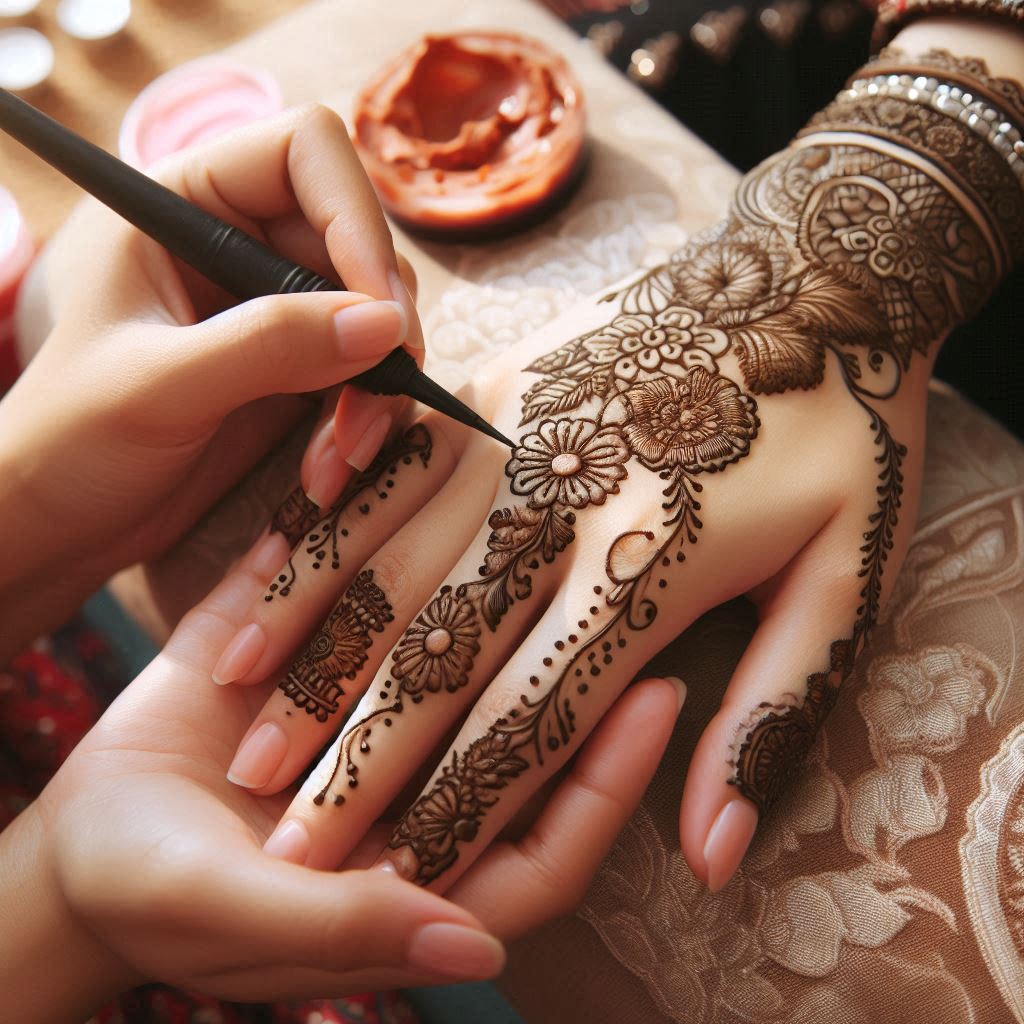Where did henna tattoos come from?
Henna tattoos have a long and ancient history dating back more than 5,000 years. They originated in regions of North Africa, the Middle East, and South Asia. Henna (also referred to as mehndi in India and Pakistan) was originally used for its cooling effects and later became a means of body art. Even the ancient Egyptians used it in their mummification process.
How has henna art changed over time?
Henna designs were initially simple and symbolic but over centuries developed into complex patterns. Today, henna isn’t for religious or cultural functions alone—it’s adopted as a temporary tattoo alternative by all people across the globe, enjoyed both for their aesthetics and without pain.

Is Henna Safe for the Skin?
What are the ingredients in classic henna?
Classic henna paste is created using the ground leaves of the henna plant (Lawsonia inermis) and combining them with natural liquids such as lemon juice, tea, or essential oils. This type of henna is usually safe on all skin types and will infrequently cause an allergic reaction. The natural stain it creates is a reddish-brown color that darkens over time. Because it comes from an organic source, it’s one of the safest to use for body art.
What are the dangers of black henna?
- Contains PPD (para-phenylenediamine): This toxin can result in serious skin reactions, such as blistering, scarring, and permanent sensitivity.
- Not natural henna: Black henna is a blend of toxic additives that deepen color but heighten risk.
- Patch test is mandatory: Always apply a skin patch test prior to using any new henna paste.
- Unregulated formulations: Black henna generally has no safety controls and significantly differs in chemical composition.
- Can stain permanently: Black henna can cause permanent stains in severe cases of allergic reaction.
What Cultural Significance Does Henna Have?
Which cultures employ henna?
- Indian culture: Weddings feature henna prominently, representing love, happiness, and good fortune. Bride henna parties are a time-honored tradition.
- Middle Eastern culture: Employed for protection and blessings, frequently during religious festivals.
- North African culture: For cosmetic as well as medicinal use.
- Jewish and Somali cultures: Henna ceremonies are pre-wedding rituals.
- What do henna designs mean?
- Paisleys and florals: Symbolize fertility and beauty.
- Peacocks: Represent prosperity and love.
- Mandala and sun motifs: Represent enlightenment and spiritual evolution.
- Hidden names in henna: In Indian weddings, the bride hides the groom’s name in her henna for him to discover.
- Vines and leaves: Symbolize devotion and energy.
How Long Does Henna Last and What Influences Its Duration?
How long do henna tattoos generally last?
Henna tattoos tend to last between 7 and 14 days. Depending on the place where the tattoo was applied, the type of skin, and care during and after application, it may differ. On areas with thicker skin such as soles and palms, henna penetrates deeper and lasts longer. It also slowly fades out as the skin naturally exfoliates.
How do you make henna tattoos longer-lasting?
- Leave it on for at least 4–8 hours: The more time it has, the deeper stain.
- Do not expose to water for 24 hours: Particularly with soap or shampoo.
- Use natural sealants: Combine lemon juice and sugar to help fix the paste.
- Moisturize using natural oils: Such as coconut or olive oil to prevent fading.
- Do not exfoliate the tattooed skin: Use mild cleansers.
- Stay warm: Henna stains darker when the body is warm.
Can You Make Henna Tattoos at Home?
What equipment and materials will you need?
- Henna cone or applicator
- Stencils (optional for beginners)
- Lemon juice + sugar mix (sealant)
- Cotton swabs and tissues
- Plastic wrap (to wrap paste overnight)
- Essential oils (eucalyptus or tea tree for deeper stain)
- What are some tips for beginners?
- Practice on paper first: Get used to flow and control.
- Begin with basic shapes: Experiment with dots, vines, and curved lines.
- Use stencils if anxious: These can help your hand along.
- Be patient: Drying is slow; hurrying can smudge the design.
- Begin with tops of hands or feet: These surfaces retain the stain best.
- Watch YouTube tutorials: Visual learning can enhance accuracy.
- Are There Contemporary Applications and Trends in Henna?
- How is henna applied in contemporary beauty practice?
- Alternative to tattoos: Some prefer henna as a way to try out designs before inking them permanently.
- Festival and event art: A hit at music festivals, cultural festivals, and parties.
- Cosmetic use: Others use henna to dye eyebrows or hair naturally.
- Bridal fashion: Fusion henna designs are becoming more popular in multicultural weddings.
- Wellness and healing: Henna is being utilized in spa treatments for relaxation.
What are current henna styles?
- White henna: Really a body paint that simulates henna for a contemporary appearance.
- Glitter henna: Henna combined with skin-friendly glitter for sparkle effects.
- Minimalist designs: Simple, spaced-out designs for a contemporary look.
- Fusion styles: Combination of Indian, Arabic, and tribal themes.
- UV-reactive henna: Glows under black light for parties and events.
- Anatomical henna: Designs that follow bone, vein, or muscle outlines.
What Should You Know Before Getting a Henna Tattoo?
Are there age or health limitations?
- Children: Best avoided unless applying certified organic henna.
- Pregnant women: Natural henna is usually safe, but black henna should be avoided.
- Allergy-prone people: Always patch test.
- Individuals with skin conditions: Talk to a dermatologist first.
- Where should you not apply henna?
- On broken or irritated skin
- Near eyes or sensitive areas
- On recently shaved skin: May cause irritation or patchy color.
- On friction-prone areas: Such as inner thighs or underarms, where henna fades quicker.